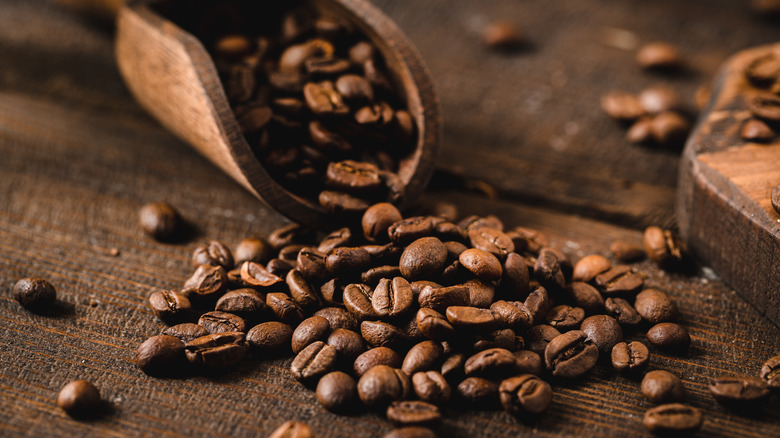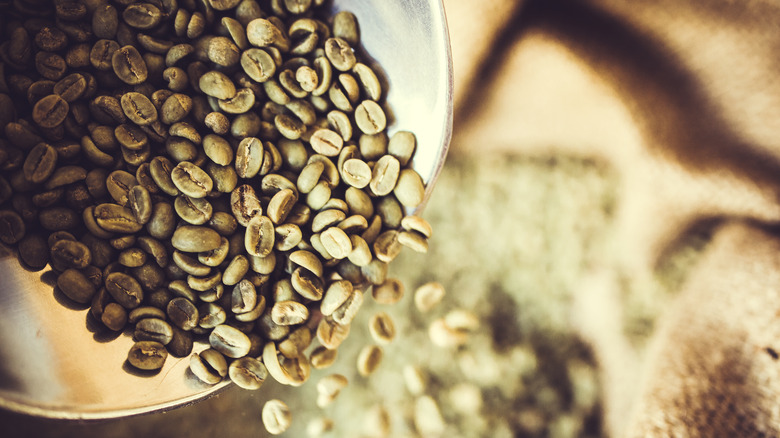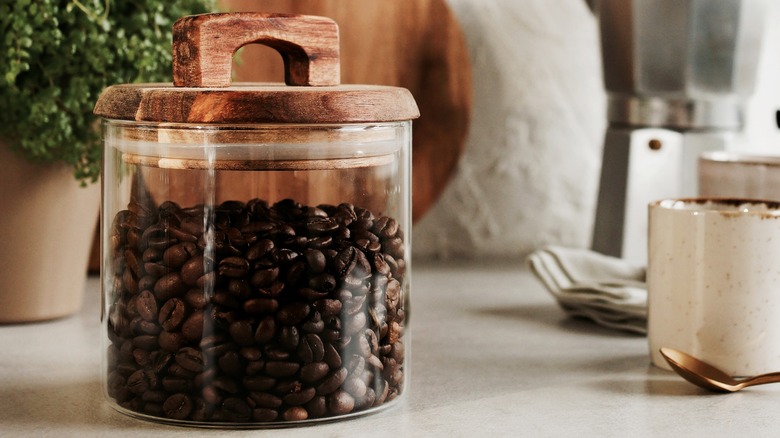Can You Really Roast Coffee In A Popcorn Maker?
For many, coffee is a morning — and sometimes mid-morning, early afternoon, and late afternoon — essential. Its robust, full flavor is cozy and comforting, and its caffeine is sustaining. When you're a several-cups-of-coffee-a-day kind of person, though, buying expertly roasted and brewed drinks from your local barista might be a little out of reach. Coffee at home — made with ground coffee or whole beans off of grocery store shelves — can start to feel lackluster, though, and it's all about the roast. Freshly roasted coffee beans really do make a difference; the beans have a rich flavor and a strong aroma that begins to languish the longer they sit after roasting.
To upgrade your morning coffee with the freshly-roasted experience at home, you can get a personal coffee roaster, but many of those can be priced at hundreds of dollars. Luckily, the conventional equipment is not the only option. The truth is that yes, you can actually roast coffee in an air popcorn maker. Coffee roasters and air popcorn machines work similarly. A coffee roaster turns and heats the beans until they're roasted; a popcorn maker turns and heats kernels until they're popped. A simple switch to this more affordable option can get you on the way to the best cup.
Tips for the perfect roast
Generally speaking, you'll encounter two types of air popcorn makers: One that has a hot air vent on the bottom of the funnel and one with hot air vents on the sides of the funnel. The latter is better for even coffee roasting, while the former tends to spit the beans up and out of the maker as they lose moisture and become lighter. Once you've got the popper in order, though, the roasting process is pretty quick. You'll put a similar amount of coffee beans in the popper as the machine's suggested amount of popcorn kernels, which is usually about ⅓-½ cup. Overall, roasting will typically take three to seven minutes, depending on how dark you want the roast to be.
The real secret to timing, though, is to listen for a cracking sound. When the beans have roasted for about three minutes, you'll hear a loud pop or crack that indicates they're at the light roast stage. Roasting for a minute or two longer will get them to medium roast, and then a softer second crack at around six minutes will indicate that they've reached dark roast. Once you've gotten to your desired roast, it's vital to take the beans out quickly and place them in a chilled colander or on cooled cookie sheets to stop the roasting process. Then, move them around with a spoon or oven mitts until they're just warm.
Wait a little while for the best cup
Now that you've got beautifully roasted coffee beans, it will be tempting to start brewing right away. But for the most delicious flavor, you'll want to wait. The coffee will taste its best about 12-24 hours after roasting. While you're waiting to brew, you should store the freshly roasted beans in an airtight container like a glass jar with a lid or even just a plastic resealable bag. However, for the first 12 hours after roasting, you won't want to seal the container. Freshly roasted beans give off a lot of carbon dioxide, and you want it to be able to escape.
If you still have leftovers after that initial cup of joe, the roasted beans will keep fresh for about a week in the airtight container. Just make sure to keep them out of direct sunlight and very cold or very hot temperatures. Too much exposure to these elements, as well as to oxygen and humidity, is a surefire way for your coffee to go stale. When you've spent the time roasting your own coffee, you want to make sure every cup is rich, robust, and fresh.


